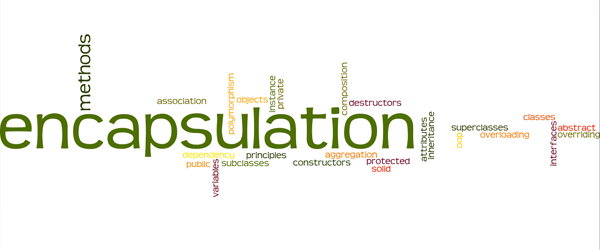Encapsulation: The Heartbeat of Object Oriented Programming

In the world of programming, understanding how to design and create software is like learning a new language. Just as words and grammar form the basis of language, Object Oriented Programming (OOP) is the foundation of many modern software applications. One of the fundamental principles of OOP is encapsulation, which plays a crucial role in making programs more organized, secure, and efficient. In this article, we’ll delve into the concept of encapsulation, breaking it down in a way that’s easy for 9th-grade students to grasp.
What is Object Oriented Programming?
Before we dive into encapsulation, let’s briefly understand what Object Oriented Programming (OOP) is all about. Imagine you’re building a virtual world, like a video game. In traditional programming, you might create a list of instructions for the computer to follow. But in OOP, we think about the world in terms of objects – things that have properties (attributes) and behaviors (actions). These objects can interact with each other, just like characters in a story.
Introducing Encapsulation
Think of encapsulation as a protective bubble around an object, keeping its inner workings hidden from the outside world. It’s like a treasure chest with a lock – only certain actions are allowed to open it and access its contents. Encapsulation helps us keep our code organized, prevents unintended interference, and promotes good programming practices.
Imagine you’re creating a game character named Alex. Alex has properties like health, strength, and speed. These properties are like Alex’s personal information – they shouldn’t be changed by just anyone. With encapsulation, we can control who can access and modify these properties.
Getters and Setters
In OOP, we use special functions called getters and setters to control access to an object’s properties. Getters allow us to read the value of a property, while setters enable us to change it in a controlled way. Going back to our game character Alex, if we want to know Alex’s health, we would use a getter function. If we want to change Alex’s speed, we would use a setter function.
Here’s a simple analogy: think of a vending machine. You can’t just reach in and grab the snacks – you need to insert money and press the right buttons. The machine controls how you access its contents. Getters and setters work similarly – they provide a controlled way to interact with an object’s properties.
Benefits of Encapsulation
Organization: Encapsulation helps us keep our code organized. Just like how you organize your school supplies into different compartments in your backpack, encapsulation allows us to group related properties and behaviors together in a tidy package.
Security: Encapsulation adds a layer of security to our code. It prevents unauthorized changes to important properties, ensuring that only valid actions can modify an object’s state. It’s like having a password to access your favorite video game – only those who know the password can play.
Flexibility: Encapsulation allows us to change how an object works internally without affecting the rest of the program. Just like how you can upgrade the parts inside a computer without changing its outer appearance, encapsulation lets us make improvements without disrupting the overall functionality.
Real-World Example: Bank Account
Let’s take a real-world example to better understand encapsulation. Think of a bank account. A bank account has properties like balance and account holder’s name, and it has behaviors like depositing and withdrawing money.
In OOP terms, we can create a “BankAccount” object with encapsulation. The balance and account holder’s name are private properties, and we use getters and setters to control access. The deposit and withdraw methods are also part of the object, ensuring that only valid actions can modify the account’s balance.
Summary
In the world of Object Oriented Programming, encapsulation is like a protective shield that keeps our code organized, secure, and efficient. It allows us to design objects that hide their inner workings from the outside world, just like a treasure chest with a lock. Through the use of getters and setters, we can control how properties are accessed and modified, promoting good programming practices.
As you continue your journey into the world of programming, remember that encapsulation is just one piece of the puzzle. Object Oriented Programming is a powerful approach that helps us model and solve complex problems by thinking in terms of objects and their interactions. Embracing encapsulation will not only make your code cleaner and safer but also set you on a path to becoming a skilled programmer who can create amazing software and bring innovative ideas to life.
Read more about Fundamentals of Programming.
Suggested Reads
- Learn Binary Numbers in a simple and easy way.
- A simple and amazing Magic Trick using Binary Numbers.
- Learn Hexadecimal Numbers: The simple and easy way.
- Learn to create Flowcharts that are Easy to Understand and Follow.
- Loops in Programming: In the simplest and easy terms.
- An Adventure into Object Oriented Programming
- Encapsulation: The Heartbeat of Object Oriented Programming
- Harness The OOP's Power Of Diversity with Polymorphism
- Build powerful and meaningful relationships in OOP using Inheritance
- Abstraction - Illuminating the Nexus of Simplified and Profound Concepts
- Design Patterns for Unparalleled Excellence
- Harnessing the Essence of Classes and Objects
- Adapter Pattern
- Bridge Pattern
- Composite Pattern
- Decorator Pattern
